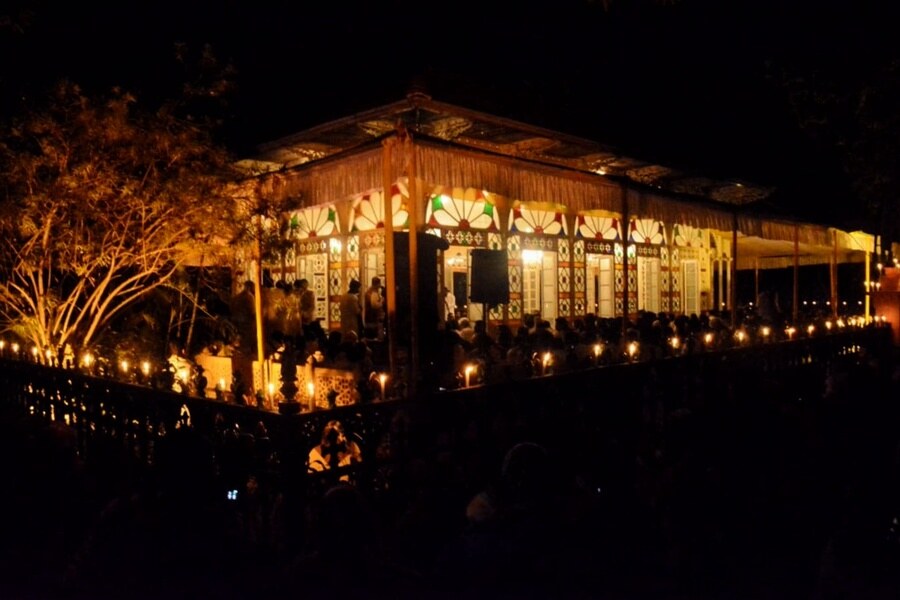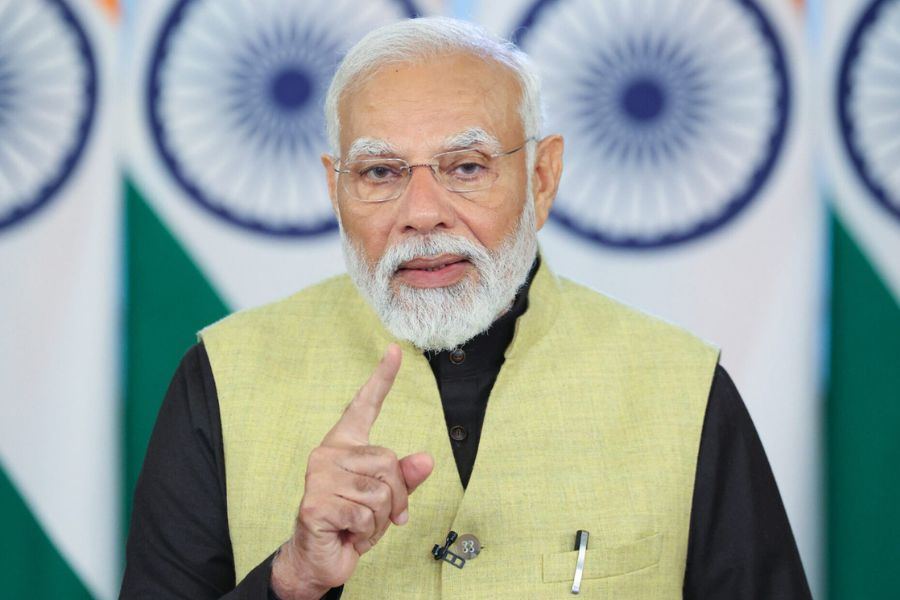 Thursday, 26 December 2024
Thursday, 26 December 2024
 Thursday, 26 December 2024
Thursday, 26 December 2024
George Bernard Shaw had famously described England and the United States as two nations separated by a common language. With due copyright fees to the legendary playwright, it can be said for the two Bengals that they are the same people divided by two languages.
One thing in common between the two Bengals – West Bengal in India and the country of Bangladesh – is a film industry struggling to remain on its feet despite an occasional success or two.
Between July and September 2023, three Hindi films made a combined business of Rs. 785 crore. The entire year’s box office collection in Bengal in the same year was Rs. 66 crore, trailing behind the Punjabi (Rs 235 crore) and Marathi (Rs. 201 crore) film industries – according to a report by Bollywood Hungama.
According to Sacnilk, a Rajasthan-based company which tracks the box-office collections of all Indian language films, the Bengali film industry’s total worldwide box office collection this year stands at Rs. 33.16 crore. The three festive releases – Bohurupi, Tekka and Shastry – are considered to have done well, earning Rs 9.15 crore, Rs. 4.02 crore and Rs 99 lakh respectively.
One question often pops up in the minds of filmmakers in both Bengals – whether the availability of a common market for films produced on either side of the international border could have served both the industries better.
The opinion on this, like on every other issue between Calcutta and Dhaka, appears to be divided.
Seen from Calcutta, the 17,42,16,115 people of Bangladesh do seem a strong market, but just numbers are not enough.
Dhaka-based filmmaker Dipankar Dipon, who learnt the craft of filmmaking under Anurag Kashyap, is among those who believe that East is East and West is West and never the twain shall meet.
“In my experience our films don’t do well in Calcutta and your films don’t do well in Dhaka,” Dipon, whose last release, Antarjaal, clashed with Shah Rukh Khan’s Jawan, told The Telegraph Online from Dhaka.
“Our audience is not interested in the lives of those on the other side of the fence. People of Calcutta cannot appreciate the realities of Bangladesh and the puzzle-solving detective films made in Calcutta do not appeal to our audience.
“No filmmaker has yet been able to identify a common emotive thread that could bring the two audiences together,” he insisted.
Most in the filmmaking industry agree that OTT platforms have been a game-changer in making the language of a film irrelevant. Many in Calcutta lap up Malayalam movies, Turkish movies and suchlike.
The presence of Bengali films, however, remains low on OTT platforms.
Take Netflix for example. There are more films in Indonesian, Malay and Turkish than in Bangla – only six titles including a documentary. There were a few films from Bangladesh earlier, which appear to have left the streaming platform.
“One big reason obviously is the presence of Hoichoi, which laps up most Bengali content, which is there and is known as the go-to place for Bengali content,” said filmmaker Srijit Mukherjee, responding to The Telegraph Online from London.
“In the bidding war, I guess it [tHoichoi] has a comparative advantage.”
Indrajit Roy, producer and vice-president of the Eastern India Motion Picture Association, said Bengal is a loss-making market for producers.
“On my film Baranda’s marketing, I had to spend around Rs. 15 lakh. Recovering 10-15 per cent from the hall collection has become difficult. No one can say with any certainty whether OTT platforms will buy the films or not. TV channels which would earlier pay Rs. 60-70 lakh for satellite rights now want the satellite rights for perpetuity for a mere Rs 20 lakh. Producer der jhanka mathay ghurte hoy [producers have to move around carrying baskets],” said Roy.
“No one is ready to come into production and without producers how will films get made?”
Producer Rana Sarkar said that for single screen theatres, the producers have to pay a week’s advance to the exhibitor.
“Returns from the multiplexes reduce with each week. We have to rent the single theatres for screening and just hope that the amount is recovered,” he said.
In neighbouring Bangladesh, since the students-led coup this August, the film industry has seen a near complete shutdown. There are no new releases and the studio floors are empty, which a filmmaker from the neighbouring country described as another “nail in the coffin”.
Next month Anonno Mamun’s Dorod – an Indo-Bangla co-production shot in Varanasi and Allahabad with Bangladesh’s most popular star Shakib Khan, along with actors from India like Sonal Chauhan, Rahul Dev and Calcutta’s own Payel Sarkar and Rajesh Sharma — is due for release, ending the drought of new releases in the neighbouring country.
The film – to be released in five other Indian languages – was stuck post the political turmoil in Bangladesh.
Dhaka has two major multiplexes, Jamuna Blockbuster with four screens and the Star Cineplex chain which has 18 screens, Additionally, there’s a single-screen cinema hall with a multiplex-like setup in each of Bogura, Sylhet, and Chittagong.
However, Bangladeshi films are shown on a maximum of nine or 10 screens across all of these.
“These two do not cover even 2 per cent of the audience,” said Dipon. “Single-screen theatre goers are not interested in Indian films. From 1,400 theatres in 2005, we have now come down to 115, of which only 30-40 are in good condition. Then, where are the films?”
For every ticket priced at 100 Taka, a producer in Bangladesh gets 17 Taka.
“We have no idea how many tickets are actually sold in the theatres running in the districts,” said Dipon.
In 2023, the Bangladesh government had offered loans to build theatres. None was interested in taking up the offer.
Calcutta-based filmmaker Atanu Ghosh echoed Dipon’s views.
“I feel as a filmmaker I do not know enough about Bangladesh, the circumstances, the problems to make a film, though it might grant us a different set of audience,” Ghosh told The Telegraph Online.
Artistic exchanges between the two Bengals have been on for over 50 years now. Ritwik Ghatak’s Titas Ekti Nadir Naam, Rajen Tarafdar’s Palanka, Gautam Ghosh’s Padma Nadir Majhi, Moner Manush and Shankhachil were all Indo-Bangla co-productions.
Actors from both sides have been working with directors from the other side of the border like Bobita did in Satyajit Ray’s Ashani Sanket and her sister Champa acted in Gautam Ghosh’s Padma Nadir Majhi.
In 1989, Tojammel Haque Bakul made a film with a modest budget of 20 lakh in Bangladeshi Taka, which proved to be a blockbuster hit with a collection of 25 crore. The film was Beder Meye Josna, which Bakul went on to remake in Calcutta as well, two years later.
Soon after Bangladesh gained independence in 1971, the Bangladesh Film Development Corporation was set up. It had a glorious run for around a decade till it moved into a genre that peaked with Beder Meye Josna.
“At present the Bangladesh film industry is getting into a better shape, which matches the international standards of filmmaking,” said Mohammad Mostafa Kamal Raz, a 42-year old filmmaker from Dhaka, who feels the East and West can meet.
“Film-loving audiences exist in both the Bengals. More collaboration will benefit the technicians, artistes and filmmakers. If both the countries can come together, reduce the red tape, this can work out,” he said.
Some filmmakers from Bangladesh are making films with lead actors from their country while hiring technicians from India.
“The quality of equipment and technicians in India is better and less expensive than at home,” said a filmmaker who did not want to be named.
Awaiting his next release Dorod, Mamun, who has shot four or five of his 22 films in India, is unhappy about one recent development.
“Now we have to pay more than double the rates for shooting in India. Earlier this was not so. Even if the film is being made by a Bangladeshi film-maker, the language is Bangla and should not be treated as a foreign language,” Mamun said.
Srijit Mukherjee said that things were looking up: "There was an exchange of technicians, artists and things were looking very good until of course the incidents of this year happened and now I think it has reached a dead end.”
A report from a decade ago on Calcutta-made films had ruled that 90 per cent of Bengali films were flops. In Dhaka, filmmakers and distributors cry about the lack of quality films that can keep the theatres occupied for 365 days.
Who among the two beggars has got more alms cannot be answered straightaway.
Meanwhile, the Telugu film industry has earned Rs 5,202.32 crore this year so far, while the Malayalam industry has earned Rs 3,520.69 crore.







